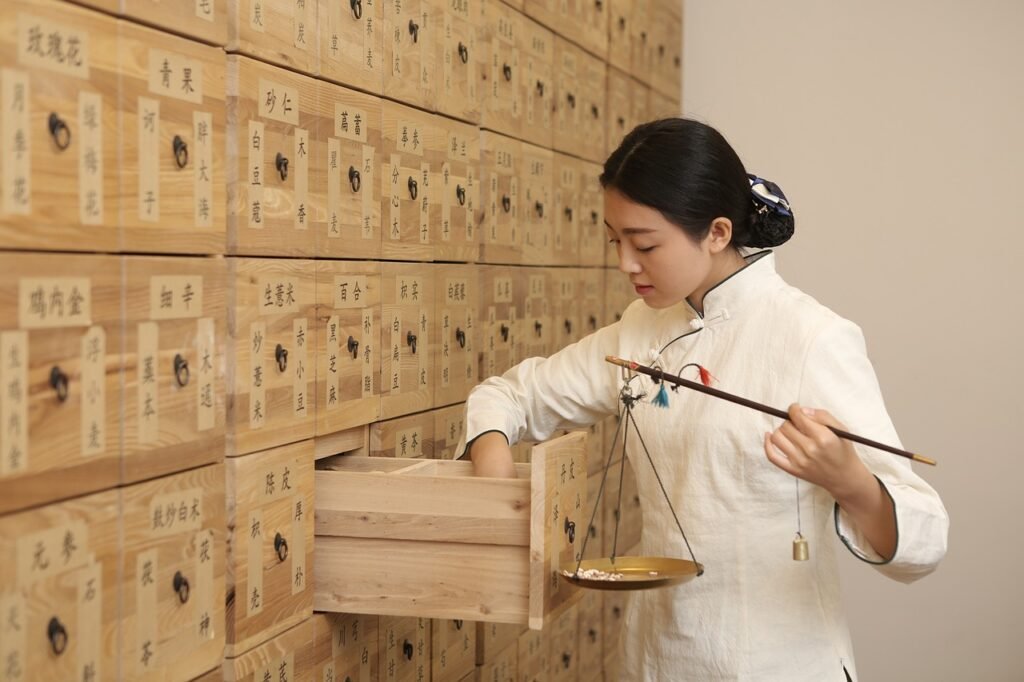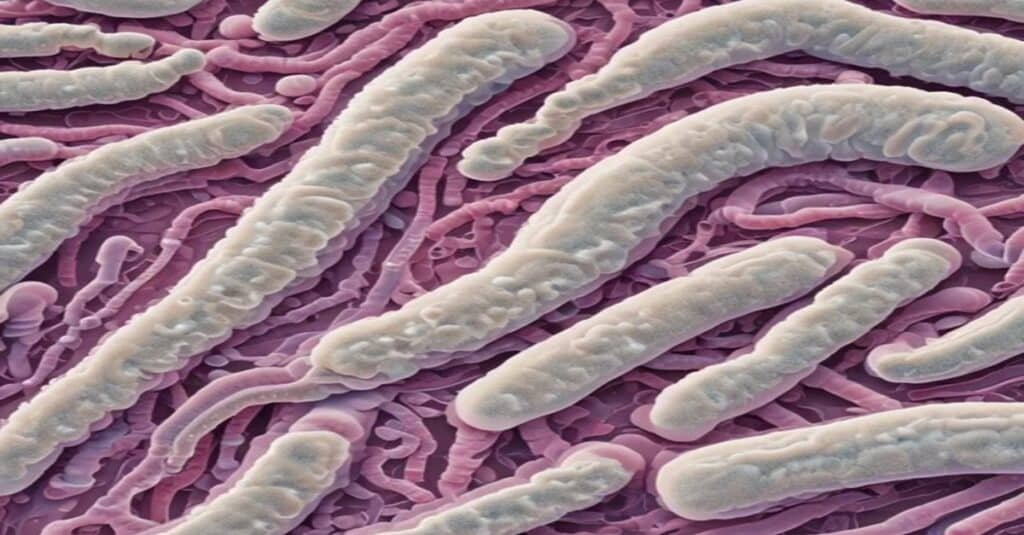Traditional Chinese Medicine: Ancient Wisdom for Modern Wellness
Traditional Chinese Medicine (will refer to as TCM in this article) is an all-encompassing system, practiced in China for thousands of years. It offers a holistic approach to health, showing that the goal is to attain balance, harmony, and natural flow within the body. TCM was, therefore, based on ancient philosophies like Taoism and Confucianism and integrated a wide range of practices, such as acupuncture, herbal medicine, Qi gong, and dietary therapy for wellness promotion and treatment of various conditions.
Historical Sources of TCM
TCM’s history traces back over 2,500 years ago with the foundational text called Huangdi Neijing, or The Yellow Emperor’s Inner Canon, which is a book that established the theoretical approach of the Chinese. Through the centuries, TCM evolved by integrating evidence-based experience and philosophical concepts. Philosophically, it was passed down through generations and influenced healthcare systems not only in China but also in different parts of the world. These concepts have allowed TCM to be applied until now because it combines the ancient practice with the modern idea of integrative medicine.
See the YouTube Video below.
Basic Principles of TCM
1. Yin and Yang
The Yin and Yang concept forms the core of TCM. It is the duality in nature, balanced, by complementary forces: light and dark; hot and cold; active and passive. Health is about the dynamic balance between yin, cool passive energy, and yang, warm active energy. If either predominates or the two are out of balance, illness can occur. Practitioners measure that balance and apply treatments to correct the balance.
2. Qi (Vital Energy)
Qi (pronounced “chee”) refers to the vital, life-force energy that flows through the body. It energizes all aspects of life activity and sustains health. Qi circulates through various pathways referred to as meridians; any obstruction or weakness along these pathways can lead to disease. TCM treatments, including acupuncture and qigong, seek to reestablish and sustain the smooth flow of Qi.
3. The Five Elements
TCM divides the world into five elements: Wood, Fire, Earth, Metal, and Water. Each is found to pair with particular organs, emotions, or even seasons. For instance:
- Wood: Liver and Gallbladder, Spring, Anger
- Fire: Heart and Small Intestine, Summer, Joy
- Earth: Spleen and Stomach, Late Summer, Worry
- Metal: Lungs and Large Intestine, Autumn, Grief
- Water: Kidneys and Bladder, Winter, Fear
This approach has the potential to provide a holistic perspective on health, disease, and treatment by considering the combination of physical and psychological forces.
4. Holism
TCM imagines the body as being composed of a web-like system in which physical, emotional, and environmental forces combine to bring about an alteration in its status. Hence, unlike a great part of the practice of Western medicine that often focuses on isolated symptoms, TCM looks at treating the person.
Major Practices of TCM
1. Acupuncture
Acupuncture is the insertion of thin needles into certain points on the body to control the flow of Qi. These points are said to relate to meridians connecting the inner organs and systems.
Benefits of Acupuncture
- Relieves chronic pain (back pain, migraines)
- Reduces stress and anxiety
- Increases immune system
- Enhances sleep
Recent studies have shown that acupuncture does indeed stimulate the nervous system, releasing endorphins and affecting pain pathways.
2. Herbal Medicine
Herbal medicine is the basis of TCM, where medicine prepared with ingredients coming from plants is used to restore balance in a body system. TCM doctors formulate prescriptions for patients based on a patient’s conditions, constitution, and the principles of Yin-Yang and the Five Elements.
Common Herbs
- Ginseng: It possesses energy-giving property that helps in strengthening
- Licorice Root: It calms inflammation and is often used to soothe the gastrointestinal system
- Goji Berries: Nourishes the liver and eyes
- Astragalus: Acts as an immune system booster that fights weakness
Herbal medicine deals with a wide range of diseases, from common colds and digestive issues to chronic diseases, and provides preventive and curative care.
3. Qigong and Tai Chi
Qigong and Tai Chi are mind-body practices that combine movement, breathing, and meditation to cultivate Qi.
- Qigong: An activity focusing on energy cultivation and healing
- Tai Chi: A flowing movement martial art for balance and relaxation
Health Benefits
- Improves flexibility and balance
- Reduces stress and anxiety
- Improves cardiovascular health
- Boosts mental clarity
These practices are especially useful in the management of chronic diseases and for overall well-being.
4. Nutritional Therapy
TCM nutrition emphasizes eating in harmony with nature and one’s constitution. Foods have been classified according to their thermal properties, such as warm or cool, damp or dry, as well as their effect on the body’s Qi and organs.
General Nutritional Principles
- Eat foods in season and fresh
- Combine flavors: sweet, sour, bitter, salty, and pungent
- Steer clear of overly processed or cold foods
For example, someone with a “cold” nature would be given warm foods like ginger and cinnamon. Someone exhibiting “heat” symptoms is advised to take cooling foodstuffs, such as cucumber and watermelon.
5. Cupping Therapy
Cupping is when glass or silicone cups are applied to the skin and attached in such a way that creates suction. This treatment triggers blood circulation, reduces inflammation, and gives pain relief.
General Uses
- Relieves muscle strain and aches
- Boosts circulation
- Removes toxins from the body
6. Moxibustion
Moxibustion refers to the burning of dried mugwort – moxa – near specific acupuncture points to stimulate the flow of heat in the body, improving circulation.
Benefits
- Warm and animate Qi and blood
- Treat conditions related to coldness, such as arthritis and digestive problems
7. Gua Sha
Gua Sha simply refers to the process whereby a smooth-edged tool is rubbed across the skin, with improved circulation and relaxation of muscles being some of the effects. This is practiced in conditions such as:
- Pain and stiffness
- Anti-inflammatory effect
- Lymphatic drainage stimulation
8. Tui Na (Therapeutic Massage)
Tui Na is a healing massage treatment that involves acupressure and manipulation therapy to restore balance in the flow of Qi and eliminate pain.
TCM Approach to Common Conditions
1. Stress Anxiety
TCM views stress as a stagnation of Qi, of which it usually occurs in the liver organ. These are replaced with Acupuncture, calming herbs like chamomile and jujube, and Qigong practice.
2. Gastrointestinal Disorders
Digestive problems are some of the most common causes of upsets in the stomach and spleen, where TCM therapy will be rebalanced using diet therapy, herbal formulas, and acupuncture.
3. Chronic Pain
Acupuncture and cupping may sometimes be used to address chronic pain by improving flow and reducing inflammation.
4. Respiratory Illnesses
To treat a cold, asthma, or allergies, herbs such as astragalus might be prescribed by a TCM practitioner in conjunction with acupuncture intended to improve lung function and immune response.
5. Sleeping Disorders
TCM treats insomnia and other sleeping disorders by rebalancing the condition of the heart and liver. Common treatments are acupuncture, herbal teas, and changes in diet.

Scientific Validation and Integration of Traditional Chinese Medicine (TCM)
The last few decades have seen the international recognition of TCM, aided by the increasing scientific evidence confirming its practice. The holistic aspect of health that TCM incorporates-practices that include acupuncture, herbal medicine, and dietary therapy placed it worldwide and integrated ancient wisdom with modern scientific exploration.
One of the most significant endorsements for TCM comes from the World Health Organization (WHO) in its official recognition of acupuncture as an efficient treatment for over 100 different medical conditions. These range from pain management for conditions like chronic back pain, migraines, and osteoarthritis among other issues including stress and even some respiratory ailments. The World Health Organization supports and sanctions acupuncture as part of main-stream health care globally, a circumstance that opens up further avenues to research and possible integration into Western medical practices.
Herbal medicine is also an important component of TCM. Its use has become increasingly popular in scientific communities in recent times. A lot of research has been carried out on the use of TCM herbs in managing chronic diseases such as diabetes, hypertension, and cancers. For example, extracts derived from plants such as ginseng, astragalus, and licorice root have been proven to have immunoenhancing activity and potential anti-inflammatory activity. A great body of literature has transformed TCM herbal medicine into a resource for adjunctive treatment of chronic diseases, further ensuring its niche in the promotion of general health and wellbeing.
Challenges and Criticisms
Despite many advantages that TCM offers, it is not without challenges like:
- Standardization: Some practices and formulas may differ in their consistency
- Scientific Evidence: For some therapies, clinical trials are not scientifically feasible, thus prohibiting their acceptance in mainstream medicine
- Misuse of Herbs: Overuse or misuse of certain herbs may lead to side effects
- However, the sophistication involved can be addressed via thorough research and education
Conclusion
A leading approach to health and wellness is offered by Traditional Chinese Medicine: it all-rounded, time-tested approach. Traditional Chinese Medicine is a holistic approach to diseases, targeting root causes rather than symptoms. With practices ranging from acupuncture, herbal medicine, and dietary therapy to Qigong, there are multiple ways to restore harmony: physical, emotional, and spiritual.
Coupled with the rising popularity of integrative medicine, TCM remains to play an important role in deepening the understanding of health in its entirety. As a whole system, it offers immense options to people for searching the whole well-being. Its use combined with conventional medicine may still make it a usable resource for achieving this holistic well-being.
References
- Joe. The World Health Organisation recommends acupuncture for over 100 conditions. Retrieved from holistic-health.org.uk: https://holistic-health.org.uk/world-health-organisation-recommends-acupuncture-100-conditions/
- Medicine, J. H. Chinese Medicine. Retrieved from www.hopkinsmedicine.org: https://www.hopkinsmedicine.org/health/wellness-and-prevention/chinese-medicine
- NIH.Traditional Chinese Medicine: What You Need To Know. Retrieved from www.nccih.nih.gov: https://www.nccih.nih.gov/health/traditional-chinese-medicine-what-you-need-to-know
- willowsatredoak. What Are the Benefits of Nutritional Therapy? Retrieved from thewillowsatredoak.com: https://thewillowsatredoak.com/addiction-blog/the-many-benefits-of-nutritional-therapy/
- Yousan. Traditional Chinese Medicine (TCM) theory and principles. Retrieved from yosan.edu: https://yosan.edu/traditional-chinese-medicine-theory/
To see other Alternative Medicine articles click here.




